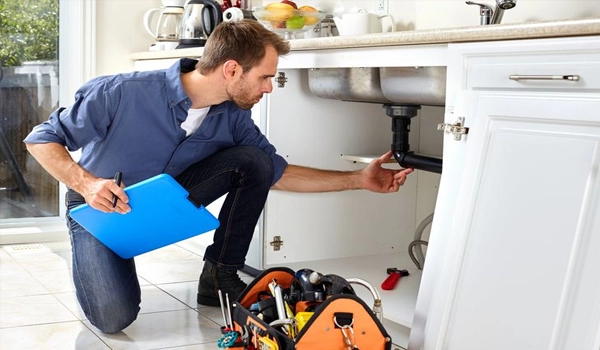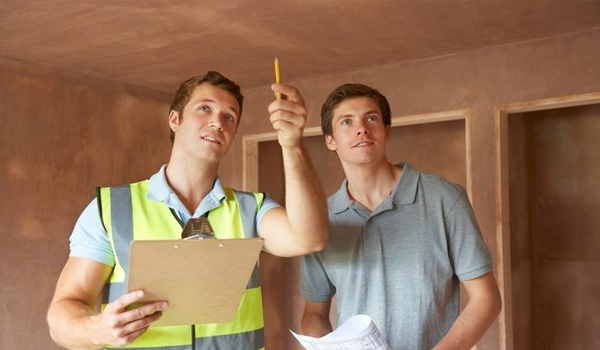7 Steps of a Complete Move-in Inspection

Finding your desirable rental house can take a while, and the negotiation and paperwork might wear you off. You just want to move in and end the frustration of finding a new rental, and it’s easy to overlook some of the things you must do before you move in. A good example is dismissing the move-in inspection. Let’s see what this is and why you have to do it.
What Should a Tenant Look for at a Move-in Inspection?
The significance of undergoing a move-in inspection is twofold. First, it indicates the flaws that were there before you moved in so that the landlord or landlady can’t ask you to fix pre-existing problems or pay for them.
The other reason is that when you perform a move-in inspection, you can ask the owner to fix it before the movers bring all your stuff to the new house. Of course, if there are a few minor problems, you can fix them after you move in. Yet, you should inform the owner of these problems.
How To Do a Move-in Inspection?
Take these seven steps of the move-in inspection to have peace of mind before furnishing the house with your stuff.
Step 1: Schedule the Inspection
You should arrange a time with the landlord to inspect the house. Inspecting the house might take one hour or longer for larger homes. So, free enough time in your schedule and ask the landlord to do the same.
Step 2: Gather Necessary Tools
If you’re doing the inspection yourself, make sure to take some essential tools with you to make the process more convenient.

- Flashlight: to see dark areas like closets or under the sink.
- Camera or smartphone: to document the process.
- Pen and paper: to note down the flaws (you can also use your smartphone to create a list).
- Tape measure: to measure the damaged areas
Step 3: Inspect the Unit Thoroughly
You should check every room and area in the house. Do not rush through the inspection process and follow a logical sequence to avoid missing any part of the house. Start the inspection at the entrance and go room by room to find out the condition of the house. Don’t forget outside areas like the balcony or the garden.
Step 4: Document Everything
Use your smartphone or camera to take shots of the damaged areas. First, take wide shots of the whole area or room and then close-ups of the specific problems. You should also make a list of the problems with detailed descriptions, including the name of the place and location. These home inspection terms can make your documents more professional.
Step 5: Discuss Findings with the Landlord
Use your list and recordings to discuss the problems with the landlord. You should agree on the issues and talk about whether you or the owner will make the repairs. If you decide to fix the problem yourself, the landlord must compensate you for that.
Step 6: Sign the Inspection Report
Once you finalize your list and draft your move-in inspection report, you should sign and date the report and the checklist. Keep a copy of the documents in case you have a dispute with the landlord later.
Step 7: Clean Up
After finding and addressing the problems, the last step is cleaning up the rental. Even minor repairs can make a mess, so let the cleaning up be the last thing you do before putting away your furniture and appliances.
What To Look for During the Inspection?
You should check every component of the house to ensure it is in optimal condition. The following move-in inspection checklist can help you inspect the house systematically.
- Walls and ceilings
- Floors and carpeting
- Windows and doors
- Kitchen appliances
- Bathroom appliances
- Lighting and fixtures
- Heating and cooling systems
- Outlets and switches
- Locks and keys
- Exterior areas (garage, patio, and balcony)
Also read: Buyer’s Home Inspection Checklist
Get Help from a Professional Home Inspector
If you’re planning to sign a long-term lease or rent an old house, it’s better to hire a professional home inspector to inspect the house. A qualified inspector is equipped with the necessary tools to find hidden problems like leaks or faulty wiring. They also draft a comprehensive and reliable inspection report, which can boost your negotiating power for repairs or compensation before you move in. But before you hire an inspector, check out the questions to ask before hiring a home inspector.

The Bottom Line
A move-in inspection can prevent future disputes between you and the landlord. But more importantly, it indicates the rental’s condition before you move in and saves you from maintenance hassles. The inspection must cover all house components, and a checklist can help you handle it like a professional. You can also ask a professional inspector to perform the inspection to benefit from expert advice and gain negotiation leverage.
- In this post:
- What Should a Tenant Look for at a Move-in Inspection?
- Get Help from a Professional Home Inspector
- The Bottom Line



